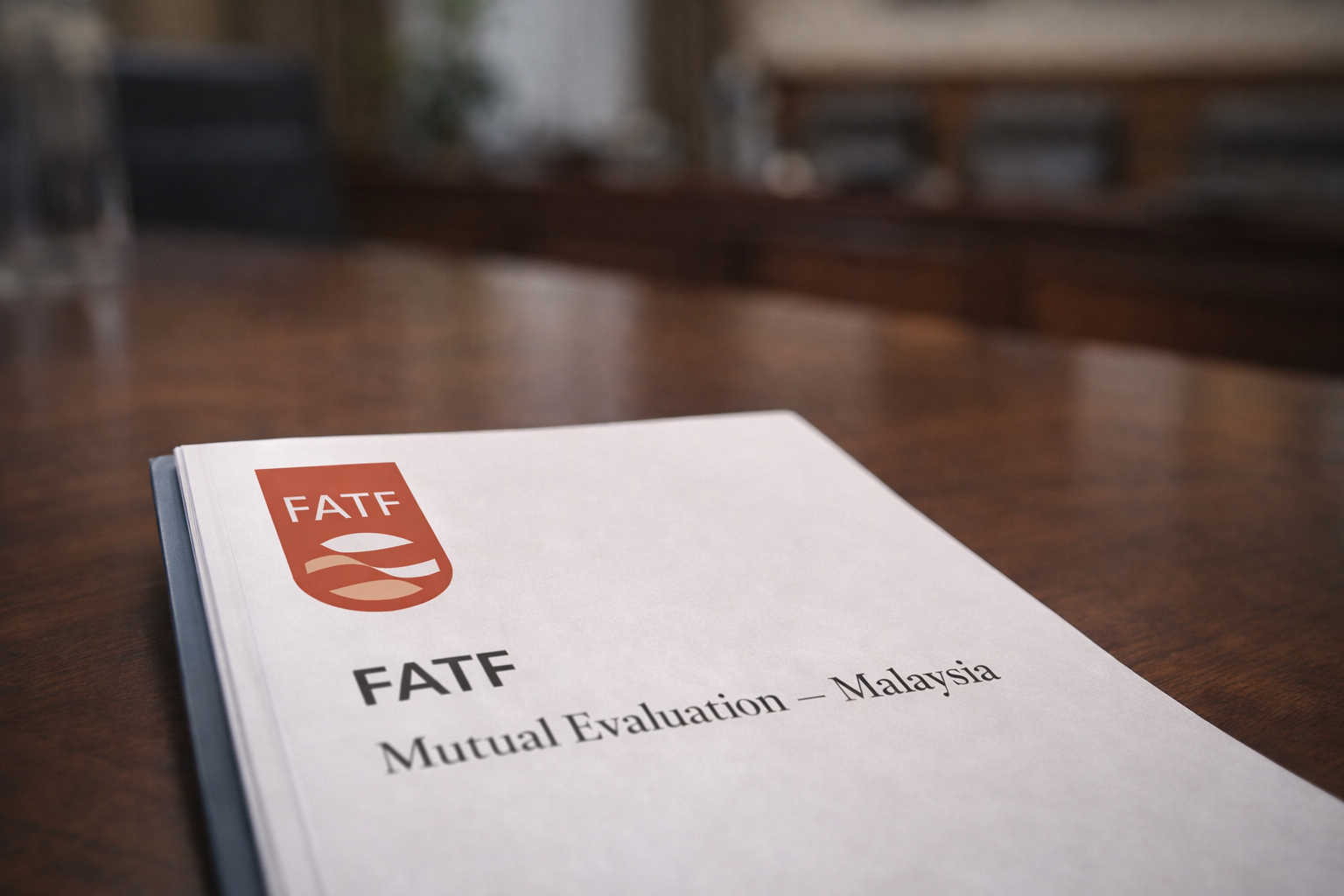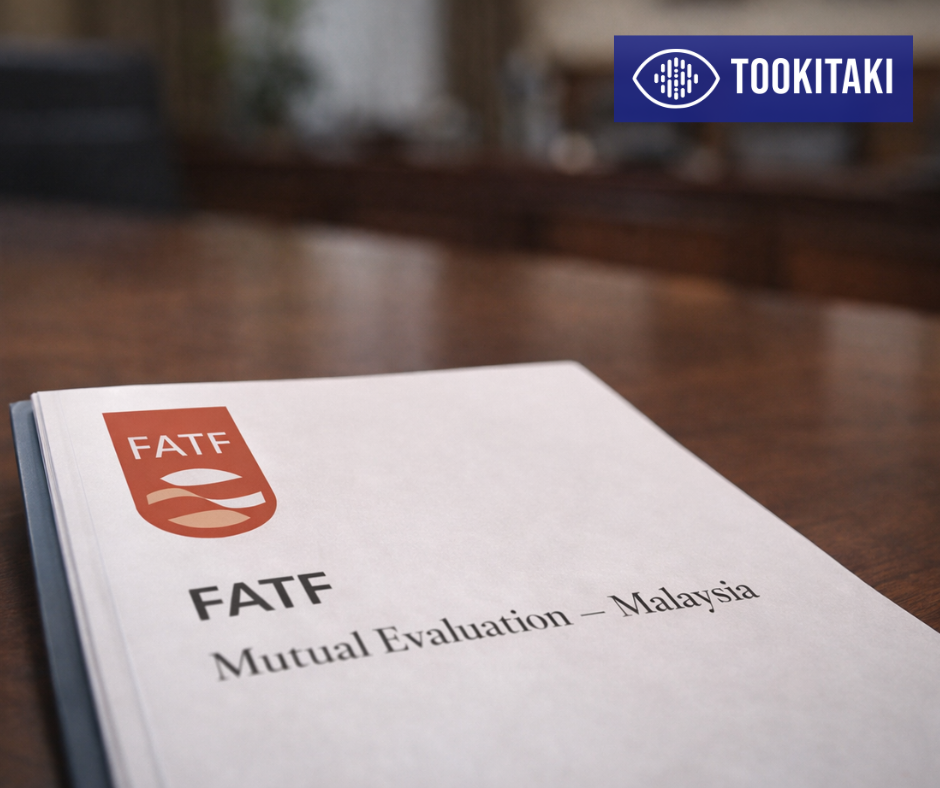Solving crimes in the financial landscape: A Q&A with Tookitaki
.svg)
“REDEFINING financial crime compliance to make the world a better place.”
Following the company’s motto, Tookitaki’s initiative of breaking silos and providing a platform to collaborate and fight financial crime, the company expanded their business in the Philippine market to bring scalable and machine learning-powered product offerings to help financial institutions address money laundering risks.
Tookitaki (a Thunes company) is a regulatory technology company offering financial crime detection and prevention solutions to some of the world’s leading banks and fintech companies to help them transform their anti-money laundering (AML) and compliance technology needs.
Founded in November 2014, the company employs over 100 people across the US, the UK, Singapore, Taiwan, Indonesia, the Philippines, and the UAE.
To know more about Tookitaki and its approach in providing end-to-end financial crime solutions to some of the world’s leading financial institutions, BusinessWorld reached out to Tookitaki’s Chief Executive Officer and founder Abhishek Chatterjee to share his thoughts and insights. Below is the excerpt of the interview:
Please introduce us to Tookitaki. What are your visions and goals?
Mr. Chatterjee: Headquartered in Singapore, Tookitaki provides end-to-end financial crime solutions to some of the world’s leading financial institutions. In the ASEAN region, some of the largest banks and fintech companies rely on Tookitaki to transform their AML compliance needs. Tookitaki was founded in November 2014 and employs over 100 employees across our offices in Asia, Europe, and the US.
Fighting financial crime needs to be a collective effort through centralized intelligence-gathering. Aimed at breaking silos, the AFC (anti-financial crime) Ecosystem, includes a network of experts and provides a platform for the experts to create a knowledge base to share financial crime scenarios.
This collective intelligence is the ability of a large group of AFC experts to pool their knowledge, data, and skills to tackle complex problems related to financial crime and pursue innovative ideas.
The AFC ecosystem is a game changer since it helps remove the information vacuum created by siloed operations. Our network of experts includes risk advisers, legal firms, AFC specialists, consultancies, and financial institutions from across the globe.
Tookitaki’s AML Suite (AMLS) is an operating system comprising four modules, such as transaction monitoring, smart screening, customer risk scoring, and the Case Manager, under one roof to address our customers’ compliance requirements. It provides holistic risk coverage, sharper detection, and significantly fewer false alerts. It can be deployed in multiple environments including the public cloud, private cloud, and data center.
The AFC Ecosystem and the AMLS work in tandem and help our stakeholders widen their view of risk from an internal one to an industry-wide one across organizations and borders. Moreover, they can do so without compromising privacy and security.
Tookitaki means to hide and seek in Bengali. The name perfectly articulates our intention to uncover the hide-and-seek nature of financial crime with artificial intelligence.
Today, Tookitaki (A Thunes company) is leading AML initiatives in most of the key digital banks in Asia. One of the largest digital banks in the Philippines, one of the world’s largest fintech and payment companies headquartered in China, one of Asia’s largest digital banks based out of Singapore, and one of the fastest-growing crypto wallets based out of Asia.
Tookitaki’s innovations in regulatory compliance have been acknowledged worldwide. Chartis Research named the company a Rising Star in its 2021 RiskTech 100 report. In 2020, the company won the Regulation Asia Awards for Excellence and G20TechSprint accelerator. In 2019, the company was featured in the World Economic Forum’s Technology Pioneer List.
What products and services do you plan to offer in the local market, and how would you differentiate Tookitaki from other vendors providing AML compliance solutions? What makes it “innovative” in addressing a regulatory or market need?
Mr. Chatterjee: At Tookitaki, we have always believed that technology is for the greater good. The AFC Ecosystem is a community-driven first of its kind initiative aimed at breaking silos and providing a platform to collaborate and fight financial crime. The AFC Ecosystem’s single motto is to break silos and provide a platform where AFC experts across the globe can use their knowledge and expertise to build a safer society.
The AFC Ecosystem is a game changer since it helps remove the information vacuum created by siloed operations. Our network of experts includes risk advisers, legal firms, AFC specialists, consultancies, and financial institutions from across the globe.
Underpinning it is a valued partnership program that is mutually beneficial for all stakeholders engaged in reducing the laundering of illicit proceeds of crime and terrorism.
Tookitaki’s offerings in the Philippines primarily include the AFC Ecosystem and the AMLS.
Our community comprises of experts covering the entire spectrum of money laundering: placement, layering, and integration. They include Financial Crime Compliance (FCC), law enforcement, and nongovernment organizations to name a few who are all giants in their own right. With this diverse community approach, financial institutions, who are the first line of defense, are empowered to identify “dirty money” patterns that aren’t easily discoverable. Operationalizing this collective intelligence results in the creation of more comprehensive risk policies.
Tookitaki’s AMLS covers the entire customer onboarding and ongoing processes through its transaction monitoring, smart screening, customer risk scoring, and the case manager. Together they provide holistic risk coverage, sharper detection, and significant effort reduction in managing false alerts. It is uniquely designed to complement existing systems by cutting through the noise and clutter generated by large volumes of alerts in legacy transaction monitoring processes.
For our customers like traditional banks and fintech companies, an extensive understanding of their consumers is a must for effective and comprehensive risk policies. The AMLS is a product that enables this through the combination of its Intelligent Alert Detection (IAD) for detection and prevention along with its Smart Alert Management (SAM) for Management.
With technology touching every facet of society, money mules and fraudulent accounts are a growing problem that needs to be addressed to assist in the country’s efforts to prevent financial crime, notably in the government sector. Tookitaki aims to improve the honesty of the Philippines’ financial market by providing comprehensive AML compliance programs for fintech companies, which include payment service providers, e-wallet providers, and virtual asset service providers.
Please elaborate more on Tookitaki’s Anti-Money Laundering Suite or AMLS and how it would apply to banks.
Mr. Chatterjee: Tookitaki’s AMLS covers the entire customer onboarding and ongoing processes through transaction monitoring, smart screening, customer risk scoring and the case manager. Together they provide holistic risk coverage, sharper detection, and significant effort reduction in managing false alerts. It is uniquely designed to complement existing systems by cutting through the noise and clutter generated by large volumes of alerts in legacy transaction monitoring processes.
As mentioned earlier, our AMLS has two main functionalities: IAD and SAM.
The SAM functionality of AMLS specifically helps banks with:
• management and filtering of false alerts
• ease of integration into their current process governance
• operational guidance from past learnings with other banks
Based on our previous customer case studies, we can say that when customers start using the SAM module, they can expect a RoI (return of investment) in approximately nine months and along with that we deliver a superior experience via:
Operational efficiency through alert prioritization
SAM across transaction monitoring and screening helps in automated triaging and helps categorize all alerts into three risk levels: L1 (Low risk), L2 (Moderate risk), and L3 (High risk).
Hence, as part of the alert handling/treatment process, there is no requirement for manual triaging since all alerts have been triaged by SAM into the aforementioned risk levels.
Faster time to market
SAM automatically builds a machine learning (ML) model that trains on customer data. The model result aligns with customer risk policy and data instead of a generic industry ML solution. The in-built Intelligent risk indicator framework automatically generates thousands of risk indicators (data science features) from input data.
An intelligent model learning framework then selects the most relevant risk indicators and chooses the right hyper-parameters to tune the model to achieve high accuracy at optimal compute cost. This is a fully automated process that requires minimal data science effort from the client team.
Continuous improvement
Through our Champion-Challenger which learns from investigator feedback and changing data, continuous improvement occurs systematically. It takes in incremental data, which includes new customers, accounts, transactions, and the latest investigator feedback, and provides consistent results through continuous learning.
Ease of integration into the current process governance
The module integrates seamlessly with the existing systems as well as the primary using standardized data models and ready adapters. Investigators can still use the existing workflow and click on the link to access alert information. This makes it easier to investigate and dispose of alerts faster.
Apart from AML solutions, what other financial crimes does Tookitaki solve?
Mr. Chatterjee: Tookitaki believes in giving back to society. We are on a mission to improve lives by tackling money laundering.
Crimes such as human trafficking, drug trafficking, illegal arms deals, and many more are tied to money laundering. Vulnerable people are being affected daily by this corruption. We offer resources, information, and a strong commitment to helping eliminate money laundering and related crimes.
We have worked closely with the survivors of human trafficking to understand the patterns of behavior around these heinous crimes and determine how we can help tackle them. Our work in this endeavor is driven by a responsibility to help make the world a safer place for everyone.
We believe in using technology for the greater good. We want to lead from the front, where crimes such as trafficking and terrorism can be eliminated via the prevention of financial crime.
What are the factors you considered in choosing the Philippines to launch an AML software tool?
Mr. Chatterjee: With the rise of technology, the world is slowly shifting to cashless transactions. According to a study from 2020-2025, cashless transactions are expected to increase by 80% and cross border payments will be valued at $156 trillion. This borderless transaction increases money laundering crimes and allows money launderers to hide in plain sight undetected.
In the Philippines, half of Filipinos own a financial account, as more Filipinos become part of the banking system, financial crimes will become more advanced. Financial institutions need to look beyond traditional tools to solve a sophisticated and growing problem to keep pace with increasing business and regulatory requirements.
The Philippines is in a strategic position because of its rising economy and being the center of international trade and traffic makes it vulnerable to a host of financial crimes and financial terrorism. Moreover, the growing number of money transfers sent by overseas Filipino workers to their loved ones adds to the responsibility of the AMLS.
Do you have data on cases of money laundering in the country?
Mr. Chatterjee: The Anti Money Laundering Report states that the country has always been vulnerable when it comes to money laundering and financial terrorism. It is vital that the country address the growing problem.
What we’ve noticed is that the political landscape in the Philippines is ever-changing. In 2000, the Philippines was placed under the Financial Action Task Force (FATF), falling under its list of Non-Cooperative Countries and Territories due to lack of basic AML frameworks.
The Philippine government enacted Republic Act (RA) 9160 of the Anti-Money Laundering Act of 2001, which preserved the integrity of bank accounts and ensured the Philippines does not become a haven for money laundering activities. As an added precaution, Philippine authorities will assist in transnational investigations to prosecute those found who are found guilty. Since then, in recent years, various laws have amended RA 9160 and various industries involving finances have been added to the existing laws as well as harsher sanctions for those found guilty of money laundering activities. Additional powers were also granted to the Anti-Money Laundering Council and other concerned persons.
The Philippines has returned to the “gray list” as of June 2021. The FATF has commended the country for its continuing efforts to eradicate the threats of money laundering and encourage the country to further strengthen its measures. And we as a trusted partner are pleased to assist the Philippine government with its goal of eradicating and eliminating financial terrorism, no country in the world should be a safe haven for criminals.
Financial institutions are inundated with voluminous false positives and case backlogs that add to costs and prevent them from filtering out high-quality alerts. How does your solution help address this problem?
Mr. Chatterjee: Tookitaki was a pioneer in identifying the use case of ML in AML compliance and our ideas came into reality with our historic partnership with the United Overseas Bank Ltd. (UOB) in Singapore.
In December 2020, we became the first in the Asia-Pacific region to deploy a complete AML solution leveraging ML in production concurrently in transaction monitoring and name screening.
The SAM functionality of AMLS specifically helped with management and filtering of false alerts that eliminated the need for manual triaging since all alerts get triaged by SAM as per categorized risk levels, such as low, medium, and high. Ease of integration into their current process governance thereby making it easier for the investigators to investigate and dispose of alerts faster.
As a result, UOB witnessed 70% reduction in false positives for individual names and 60% reduction in false positives for corporate names. The solution also helped with a 50% reduction in false positives with less than 1% misclassification and 5% increase in fileable suspicious activity reports.
This is yet another example of how Tookitaki sets new standards for the regulatory compliance industry’s fight against money laundering.
We have partnered with well-known fintech companies in the Philippines to assist local companies to stay on top of their compliance requirements and we hope to expand our partnership with even more fintech companies in the future.
What do you think are the biggest risks faced by banks being used for money laundering and how do you plan to mitigate or eliminate these risks?
Mr. Chatterjee: Banks need to have a holistic view of money laundering risks and the threat scape across various banking segments such as corporate, retail, and private. Existing static and granular rules-based approaches, which are oblivious to the holistic trend with a narrow and uni-dimensional focus, are not capable of doing the same. Existing rules-based systems produced a significant volume of false positives. These false leads are a drain on productivity as they take significant time and resources to be disposed of. In the AML compliance space, banks are wasting more $3.5 billion per year chasing false leads because of outdated AML systems that rely on stale rules and scenarios and generate millions of false positives, according to research.
Undoubtedly, using limited resources to close off non-material and unimportant alerts is manual and onerous, resulting in huge backlogs for both processes and missed/delayed suspicious activity report filings. Furthermore, the ballooning costs of AML compliance coupled with the high volume of backlog alerts swamp compliance teams and potentially distract them from “true” high-risk events and customer circumstances.
Alert investigation becomes a time-consuming and labor-intensive affair as the compliance team spends significant time gathering data and analyzing it to differentiate illegitimate activities from legitimate ones. Disparate data sources and highly complex business processes add to the difficulty of the investigation team in analyzing the links between parties and transactions.
As mentioned earlier, Tookitaki’s AMLS includes transaction monitoring, smart screening, customer risk scoring, and case management, a centralized investigation solution.
Transaction monitoring looks for suspicious transactions across different systems. It unlocks the power of Tookitaki’s library of typologies to detect hidden suspicious patterns.
Tookitaki’s AMLS generates fewer alerts of higher quality and then segregates them into low, medium, or high-risk alerts so companies can prioritize their investigations. The AMLS also updates regularly to include new money laundering patterns.
Smart screening watches out for high-risk individuals and corporate customers. Tookitaki designed the name screening module to handle a wider range of complex name permutations. To reduce the number of undetermined hits, Tookitaki enriched the module with inference features and additional customer profile identifiers. Tookitaki’s name screening module also reduces false positives, which happens when AML software incorrectly flags a customer as high-risk.
The Customer Risk Scoring module empowers banks in reducing their cost of compliance by providing an actual consumer view. This is backed by dynamic risk assessment that is self-evolving based on consumers’ new financial patterns.
ML models, too, benefit AFC ecosystems. For one, it increases effectiveness in identifying suspicious activities due to its sharper focus on data anomalies rather than threshold triggering. ML models also allow for easier customization of data features to accurately target specific risks, as well as enable extended look-back periods to detect more complex scenarios.
Any other insights you’d like to share?
Mr. Chatterjee: The AFC Ecosystem is now live, which means it is now open to the broader public. The ecosystem has grown considerably over the past few months owing to the active contribution by the experts. The AFC Ecosystem is a strong testament to how technology contributes to the critical mission of helping financial services combat crime and the financing of terrorism. With the ecosystem being open to the public, an AFC Honoree Badge Program has been launched because we believe that together we can make a difference.
(As appeared on Business World)
Experience the most intelligent AML and fraud prevention platform
Experience the most intelligent AML and fraud prevention platform
Experience the most intelligent AML and fraud prevention platform
Top AML Scenarios in ASEAN

The Role of AML Software in Compliance









